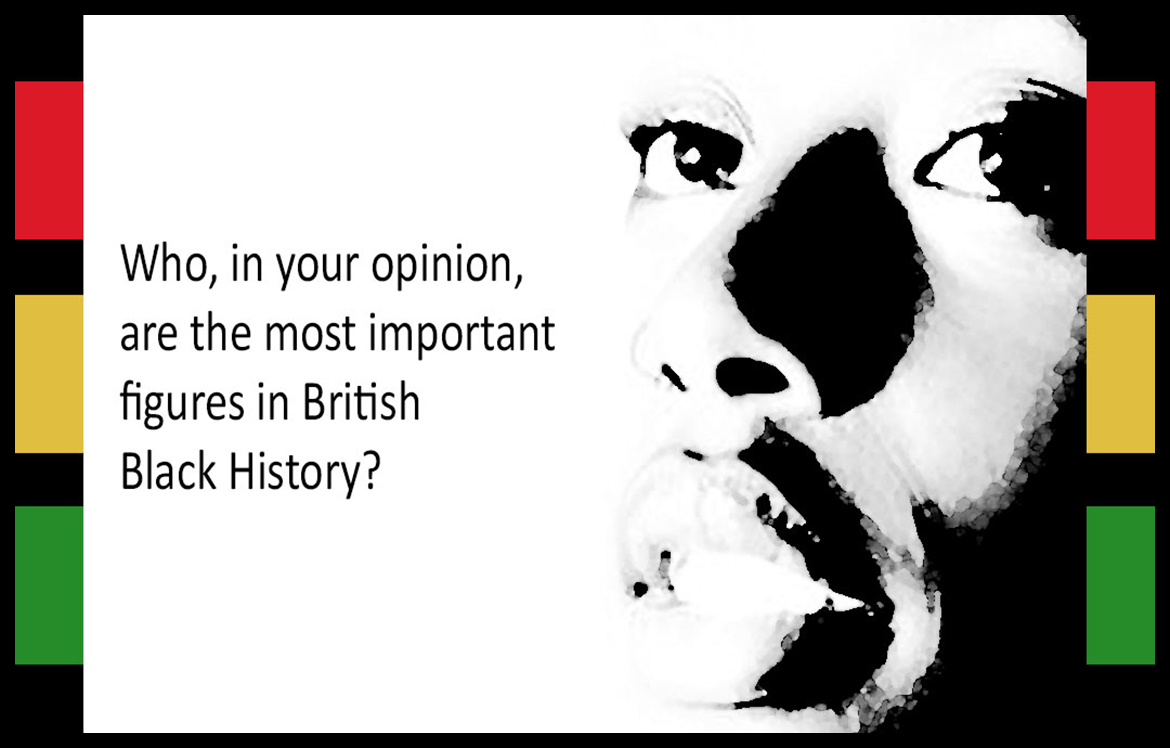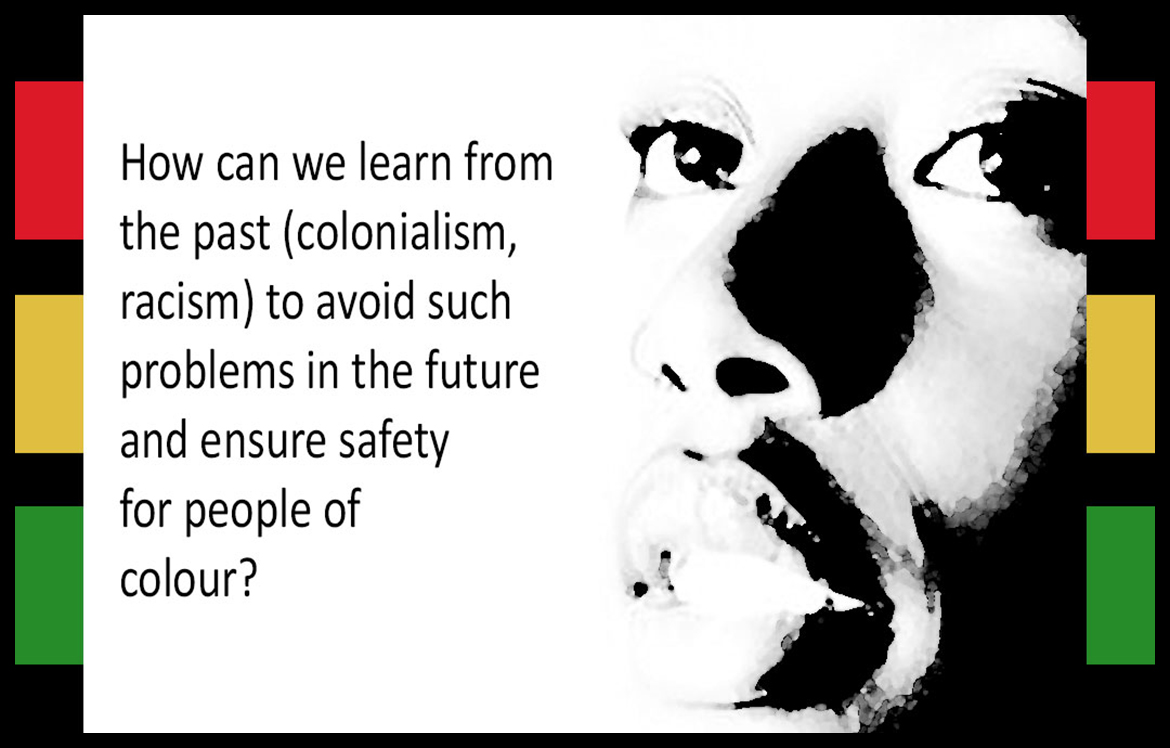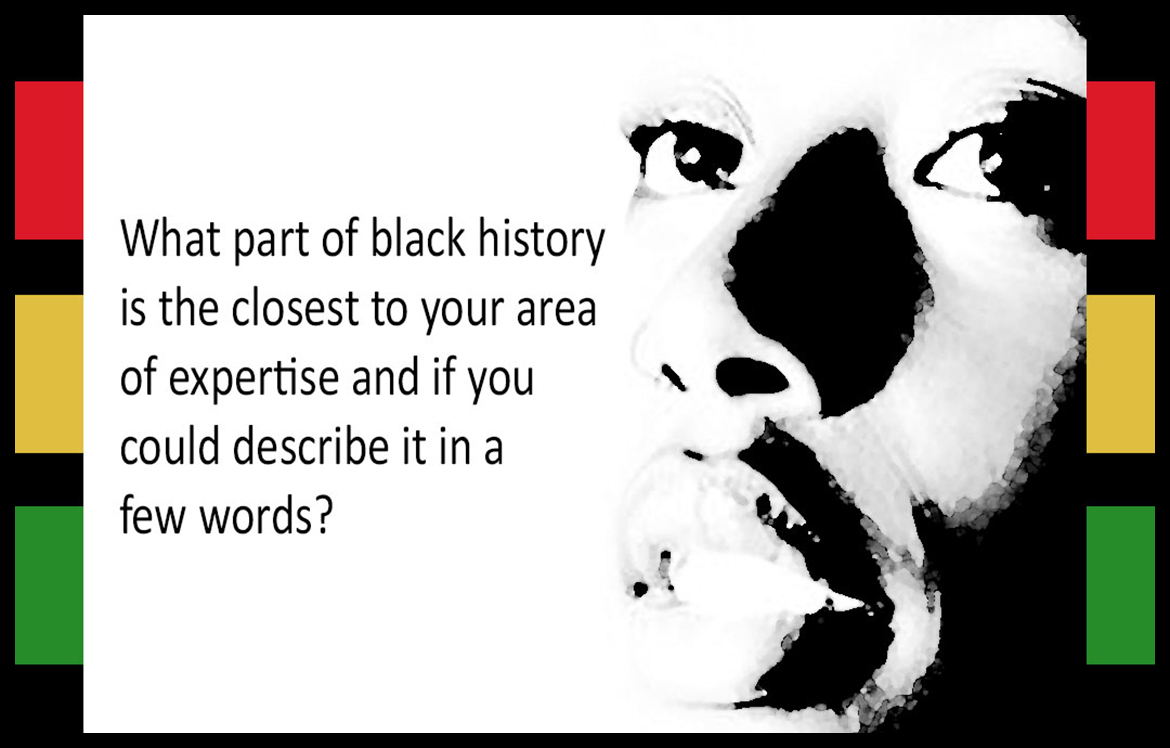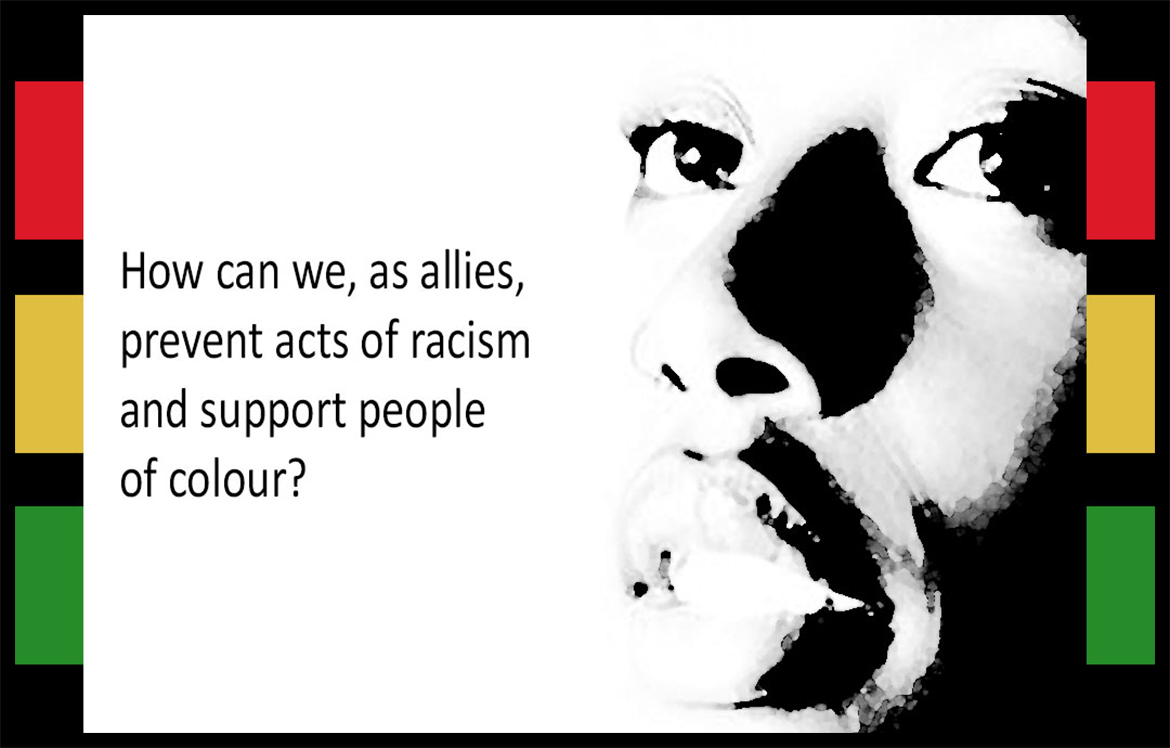Question 1

Who, in your opinion, are the most important figures in British Black History?
As well as studying figures like Olaudah Equiano, Althea Jones-Lecointe, C. L. R. James and Mary Seacole, it is important to explore Black history as an integral part of British history, with a focus on the lives of ordinary Black people. Peter Fryer, David Olusoga and David Dabydeen, among others, have examined Black people’s lives in Britain (in all their diversity) from Roman occupation onwards. I’d recommend Bernadine Evaristo’s verse novel, The Emperor’s Babe (2001), an unforgettable re-imagining of the lives of Africans living in Roman Britain, which combines deep Black feminist commitment with joie de vivre.
Question 2

How can we learn from the past (colonialism, racism) to avoid such problems in the future and ensure safety for people of colour?
In her memoir How to Lose Your Mother, the Black feminist scholar Saidiya Hartman speaks of ‘the afterlife of slavery – skewed life chances, limited access to health and education, premature death, incarceration and impoverishment. I, too, am the afterlife of slavery.’ The disproportionate impact of the pandemic upon minority communities, in the UK and beyond, imbues Hartman’s words with renewed urgency and poignancy. Yet, there’s a tendency to downplay the ‘afterlives’ of colonialism and slavery, and the structural inequalities that have followed in their wake. Keeping attention focused on such histories and their legacies is crucial to develop a more nuanced understanding of race and racism, and to address injustice.
Question 3

What part of black history is the closest to your area of expertise and if you could describe it in a few words?
My research focuses on African American literature and culture, especially the Harlem Renaissance, the flowering of Black visual art, dance, music, and literature in the United States in the 1920s and 1930s. Together with Professor Miriam Thaggert (SUNY-Buffalo), I have recently co-edited two volumes that seek to encapsulate and analyze the eclecticism and range of African American cultural expression in the period, focusing on everything from radical magazines, clothes and book illustrations to blues poetry, home decor and representations of Black children.
Question 4

How can we, as allies, prevent acts of racism and support people of colour?
Individual behaviour is important, especially when it comes to listening to people’s experiences, fostering inclusive spaces, and resisting and challenging discrimination. But it is not sufficient. Racism is structural. Individual anti-racism must be accompanied by a parallel focus on institutions, political programmes and systemic injustice.
